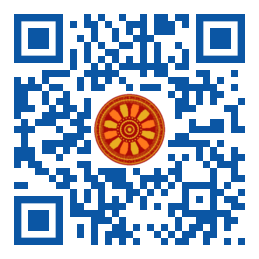
:: International Transaction Journal of Engineering, Management, & Applied Sciences & Technologies
http://TuEngr.com

ISSN 2228-9860
eISSN 1906-9642
CODEN: ITJEA8
FEATURE PEER-REVIEWED ARTICLE
Vol.13(13)(2022) |
A Comparison Study of Hybrid Composite Laminate Failure using Finite Element Analysis and Artificial Neural Network
 Noor Idayu Mohd Tahir,
Mohamad Mali,
Muhammad Nadiarulah Nanihar,
Jamaluddin Mahmud
(School of Mechanical Engineering, College of Engineering, Universiti Teknologi MARA, 40450 Shah Alam, Selangor, MALAYSIA).
Noor Idayu Mohd Tahir,
Mohamad Mali,
Muhammad Nadiarulah Nanihar,
Jamaluddin Mahmud
(School of Mechanical Engineering, College of Engineering, Universiti Teknologi MARA, 40450 Shah Alam, Selangor, MALAYSIA).
Discipline: Material Science, Mathematical modelling, Mechanical engineering.
doi: 10.14456/ITJEMAST.2022.259
Keywords:Glass/Epoxy; Graphite/Epoxy; Boron/Epoxy; Prediction; Uniaxial tensile load
AbstractA composite material's failure behaviour is difficult to predict because of its spontaneity. Failure prediction of hybrid composite laminates under uniaxial stress was studied using Finite Element Analysis (FEA) and Artificial Neural Network (ANN). Changes in the orientation of the fibres can reveal the failure behaviour of composite laminates. The implementation of constructing finite element models was carried out to replicate physical testing. The Maximum Stress and Tsai-wu Failure Criteria were used in order to predict laminate failure. Uniaxial tensile load tension was applied to composite plates, having 24 layers. The failure condition was attained based on FPF loads. In addition, the ANN tool in MATLAB was also used to predict the failure of the same composite laminates. Finally, the simulated data from ANSYS was compared to ANN model failure data. The predicted failure between ANSYS and MATLAB was caused by the slight percentage inaccuracy of the output. The methods produced more realistic and reliable results, with FEA results closely matching the analytical results. Thus, the advances in knowledge in predicting the failure behaviour of hybrid composite laminates using artificial neural networks (ANNs) in this study are noteworthy.Paper ID: 13A13G
Cite this article:
Mohd Tahir, N.I., Mali, M., Nanihar, M.N., and Mahmud, J. (2022). A Comparison Study of Hybrid Composite Laminate Failure using Finite Element Analysis and Artificial Neural Network. International Transaction Journal of Engineering, Management, & Applied Sciences & Technologies, 13(13), 13A13G, 1-9. http://TUENGR.COM/V13/13A13G.pdf DOI: 10.14456/ITJEMAST.2022.259
References
- Chen, X., Sun, X., Chen, P., Wang, B., Gu, J., Wang, W., Chai, Y., Zhao, Y. (2021). Rationalized Improvement of Tsai-Wu Failure Criterion Considering Different Failure Modes of Composite Materials. Composite Structures. 256, 113120.
- Daryadel, S. S., Ray, C., Pandya, T., Mantena, P. R. (2015). Energy Absorption of Pultruded Hybrid Glass / Graphite Epoxy Composites under High Strain-Rate SHPB Compression Loading. Material Sciences and Applications. 6, 511-518.
- Dawson, C. W., Wilby, R. (1998). An Artificial Neural Network Approach to Rainfall-runoff Modelling. Hydrological Sciences Journal. 43:1, 47-66.
- Ghani, A. F. A., Mahmud, J. (2020). Characterisation of Hybrid Carbon Glass Fibre Reinforced Polymer (C/Gfrp) of Balanced Cross Ply and Quasi Isotropic Under Tensile and Flexural Loading. International Journal of Automotive and Mechanical Engineering. 17(1), 7792-7804.
- Ma, Z., Chen, J., Yang, Q., Li, Z., Su, X. (2021). Progressive Fracture Analysis of The Open-Hole Composite Laminates. Composite Structures. 262, 113628.
- Reddy, J. N. (2012). Energy and Variational Methods in Applied Mechanics (with and Introduction to the Finite Element Method). New York: John Wiley.
- Noh, N. N., Samsudin, A. H., Mahmud, J. (2017). Failure Analysis of Glass/Epoxy and Graphite/Epoxy Laminates due to the Effect of Variation in Lamination Scheme and Angle of Fibre Orientation. Materials Science Forum. 889, 36-44.
- Tolson, S., Zabaras, N. (1991). Finite Element Analysis of Progressive Failure in Laminated Composite Plates. Computers & Structures. 38(3), 361-376.
- Wintermantel, El, Mayer, J., Goehring, T. N., Aqida, S. N. (2016). Composites for Biomedical Applications. Reference Module in Materials Science and Materials Engineering, 1-6.
- Yeh, P., Chang, P., Yang, J., Wu, P. H., Liu, M. C. (2011). Blunt Notch Strength of Hybrid Boron/Glass/Aluminum Fiber Metal Laminates. Materials Science and Engineering: A. 528(4-5), 2164-2173.
- Yeh, P., Chang, P., Wang, J., Yang, J., Wu, P. H., Liu, M. C. (2012). Bearing Strength of Commingled Boron/Glass Fiber Reinforced Aluminum Laminates. Composite Structures, 94(11), 3160-3173.
Other issues:
Vol.13(12)(2022)
Vol.13(11)(2022)
Vol.13(10)(2022)
Archives
Call-for-Papers
Call-for-Scientific PapersCall-for-Research Papers: ITJEMAST invites you to submit high quality papers for full peer-review and possible publication in areas pertaining engineering, science, management and technology, especially interdisciplinary/cross-disciplinary/multidisciplinary subjects.
To publish your work in the next available issue, your manuscripts together with copyright transfer document signed by all authors can be submitted via email to Editor @ TuEngr.com (please see all detail from Instructions for Authors)
Publication and peer-reviewed process:
After the peer-review process, articles will be on-line published in the available next issue. However, the International Transaction Journal of Engineering, Management, & Applied Sciences & Technologies cannot guarantee the exact publication time as the process may take longer time, subject to peer-review approval and adjustment of the submitted articles.